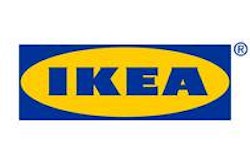
Craft beer is as healthy as ever as the shift from big brands to smaller micro-brands rolls on, putting pressure on all of the national players, craft or otherwise. In American craft beer, the students are becoming the masters and now the old masters need to adjust to these ambitious students. Just as big domestic beer gave way to crafts and imports over the past three decades, the best known national craft brands and many of the flagship imports are now giving way to a seemingly unstoppable pipeline of local and regional microbrews. We are now well into this new stage of the craft brewing revolution where these local and regional brands are taking market share from everyone across the spectrum, especially the craft flagships which built the industry as we know it today.
Not your father’s craft beer
With flavors and styles wildly different from the classic macro brews of Budweiser, Miller, and Coors, craft has always held a unique spot for more adventurous and experimental drinkers. But with the craft brew revolution in its fourth decade, the flagship brands like Sam Adams, Sierra Nevada, and Fat Tire are now part of the national beer establishment alongside the global industry stalwarts. As consumers, Millennials and Generation Z are accustomed to constant innovation and have a very visible preference for locally produced offerings. This is seen across many product categories, not just beer. The proliferation of local beer brands fits right into the Millennial and Gen Z wheelhouse and, as a result, it appears that there’s no end in sight to the small brand market share smash and grab we’re seeing in real time.
Even with its challenges, craft is still by far the class of American beer. An over-reliance on the IPA style, the specter of possible over-capacity, and the up and down quality of many local breweries are, and will always be, challenges. Additionally, the market is getting more crowded and the law of big numbers is a cruel master. Craft will slow at one point, it’s inevitable. But for now, the curious young consumer is well on board and the category remains the healthiest part of the beer industry. Our current numbers and future projections reflect this.
Crafts will continue to take share
Here at Beverage Marketing Corp., in our DrinkTell™ database, we estimate total beer will be down about 1% in 2018. However, we project craft beer will grow volume slightly above +4%, reaching just short of 21 million barrels for an industry market share of 10.4% based on our craft definition, a new record. Looking ahead, we expect craft will continue to churn along nicely from 2018 to 2022 at an annual volume growth rate between +3 to +4%. It should reach an industry share of 12% by 2022, an unthinkable level 20 years ago. The growth we see ahead will be driven primarily by hundreds and maybe thousands of new small brands finding their way from brew pubs and small breweries into the mainstream.
Our on-trade research provides a detailed view into the small craft beer brand trend. Beverage Marketing Corp.’s 2018 On-Premise Intelligence Report, produced in partnership with Technomic, provides a clear view into what’s really going on in the on-trade, where the war for the consumer is fought every day and craft is winning. Not surprisingly, consumers aged 21-34 are increasingly seeking out adult beverages in off-beat locations like casinos and bowling alleys. In many occasions, alcohol is a primary traffic driver and adds real value to the overall experience. Tap and tasting rooms are another emerging segment finding traction with consumers, playing well into craft’s strengths.
The numbers tell us that craft is winning at the traditional bar as well. Our data shows craft beer in the on-premise grew +3.4% last year versus a flat beer category, a great performance. However, each of the top five on-premise craft brands shrunk in 2018 and these five brands make up 20% of total craft sales in the on-premise. Normally, if the top five brands of a category were shrinking, there would be great cause for alarm. However, the ‘all others’—overwhelmingly the small locals—grew +5%. Most of these ‘all other’ brands have less than two million cases of volume individually, so the minnows are overwhelming the sharks at the bar.
The menu tells the story, and craft is winning that valuable real estate. Although craft beers make up slightly more than 10% of industry volumes, according to our research the category accounts for a whopping 45% of beer menu offerings. That compares to 25% for imports, 23% for domestics and 7% for all other malt beverage choices. Additionally, that number is up year-on-year +7%. Anecdotally, we see the evidence as plain as day in our channel checks. In our recent trade tour of downtown Atlanta, restaurant menus were overrun with craft. In most accounts we visited, we had to ask the server specifically for the menu of domestic macro beer options. Getting the local Georgia brand SweetWater was far easier than getting a Budweiser and that’s becoming all too common for the big brewers.
Where do we go from here?
We think the small craft beer players have three real advantages that they will use to continue pecking away at market share. First, they can avoid many of the mistakes made by their elders whether it be in product quality or marketing. Second, the young consumer is more on board with local and innovation than any time in recent memory, a wave that can be ridden for some time. Third, the big brewers seem to have no answers, and that’s certainly not being fixed any time soon. Craft’s outlook is still enviable.

























